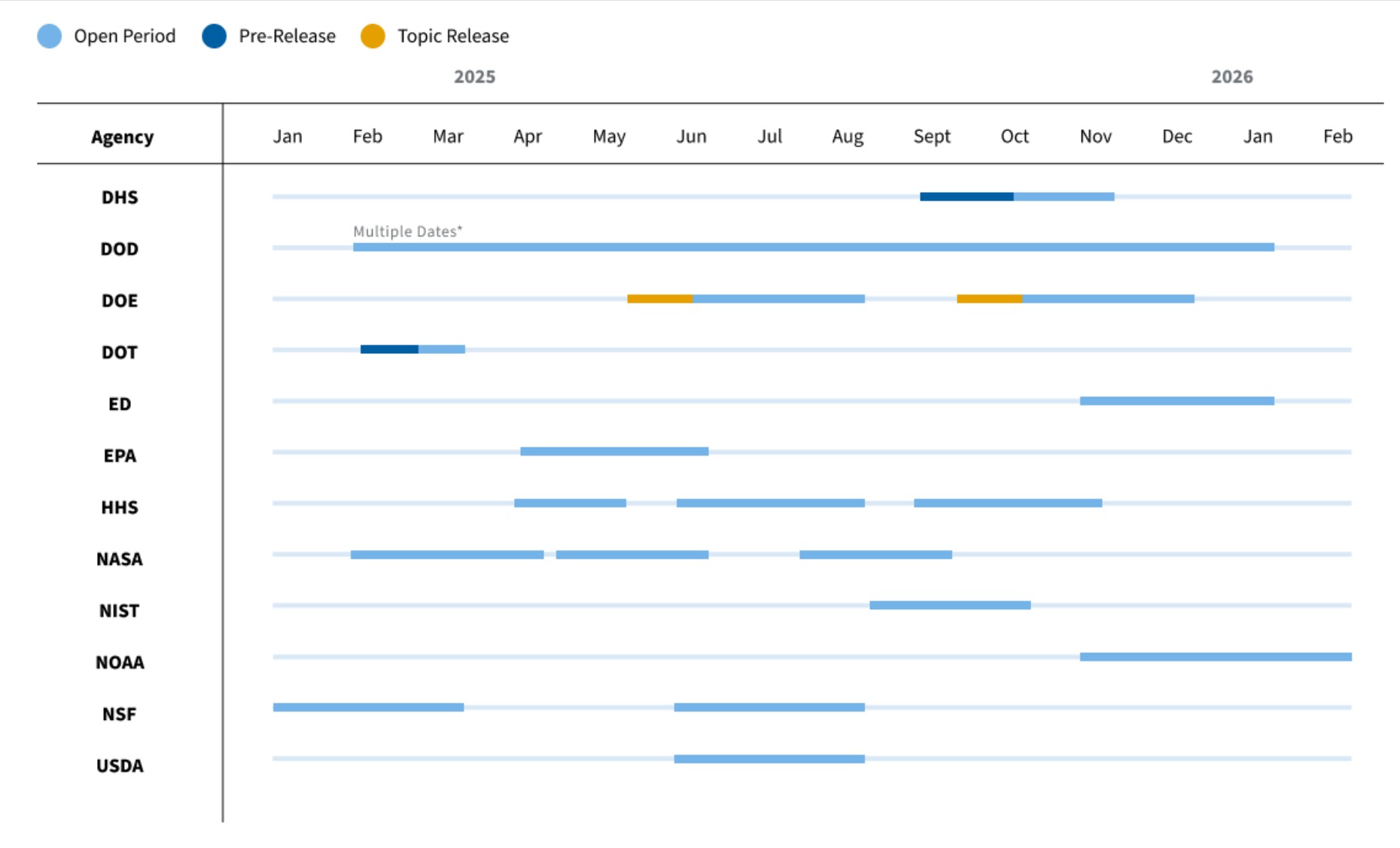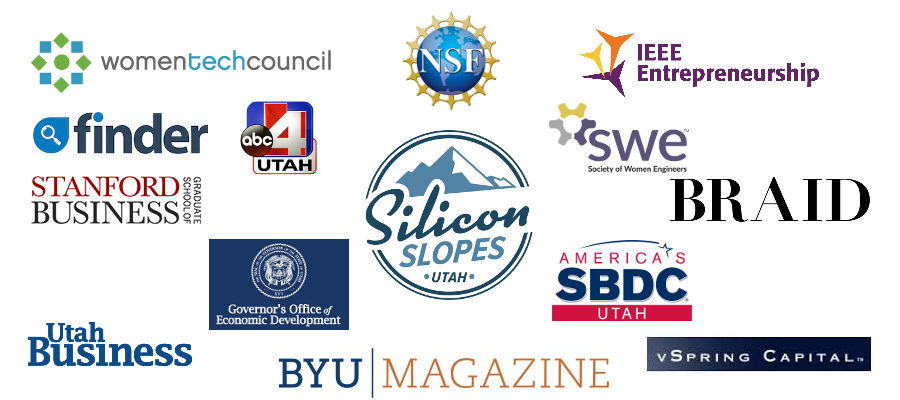It’s been a crazy few months if you rely on federal funding in any way! Overhead reductions, then court rejections. Budget cuts, then reinstatements (maybe). DOGE and then no-DOGE! And SBIR/STTR is absolutely dependent upon the state of federal research funding.
If you are interested in SBIR or STTR funding, what should you expect?
Will these changes and potential changes in federal funding affect SBIR/STTR? Might they go away or will these programs still be around? Should you pursue this funding? What about SBIR Reauthorization? And most importantly, what should you do?!
Let’s talk about it!
 In the early part of 2025, reports were that there were interruptions in funds availability for existing awardees, changes or cancellations in the review process at various agencies, and re-reviews of proposals to ensure compliance with new administration guidelines. In addition, there were indications that a few handfuls of SBIR/STTR awards were terminated.
In the early part of 2025, reports were that there were interruptions in funds availability for existing awardees, changes or cancellations in the review process at various agencies, and re-reviews of proposals to ensure compliance with new administration guidelines. In addition, there were indications that a few handfuls of SBIR/STTR awards were terminated.
However, at this time, mid-2025, federal agency funds have been allocated for the remainder of the fiscal year (through September 30) under a Continuing Resolution and SBIR/STTR agencies generally received close to their projected funding levels. For FY 2025, overall agency budgets for SBIR/STTR awards are expected to be stable and solicitations continue to be issued.

For example, here’s the latest SBIR.gov calendar of topic releases by agency.
Authorized by Congress
It is important to remember that SBIR/STTR programs are authorized by Congress directly (ie in statute!). In fact, reauthorization of SBIR/STTR is pending this year! There are two major competing reauthorization bills, and each includes some good news for SBIR/STTR.
However, the authorization for SBIR/STTR is as a percentage of the Agency research budget and there are efforts to significantly cut overall federal research spending. Some early indications are for a 37% reduction in spending at the NIH, and over 50% at the NSF. NASA, DoE, NOAA, USDA and meaningful cuts at other science/STEM focused agencies. Therefore, SBIR/STTR funding would fall accordingly. This would likely result in increased competition for SBIR/STTR funds. This has happened in the past during tough economic cycles when funds stayed the same but applications soared, making it harder for high quality teams to be heard, and awarded.
SBIR/STTR Conference
What does the SBA say? On June 9 -11, 2025, America’s Seed Fund (under the SBA) held the “SBIR/STTR Spring Innovation Conference“. However, less than 2 months before the conference date, on April18, the details were not available online, only last year’s conference information was available. I sent an email asking for information and the email I got back was a shock. Here’s what the contractor managing the conference said on April 21, 2025.
“We couldn’t post the program until we have the approval. We were notified last week that the event is deemed mission critical by the SBA, so the event is a go. Of course, everything is subject to change. Program should be posted the event of this month.”
What a scramble for something that is an annual event! The conference did go forward, but it seemed to have a different vibe than in past years. I asked a colleague who attended whether the conference shed light on the SBIR/STTR funding situation. The answer was “not really”. Here are some takeaways from the conference.
- Budget Restrictions had an impact on conference participation: Some agencies (NSF), and several program directors did not attend who would otherwise have been there. This is especially shocking as NSF has stated publicly that they believe in SBIR/STTR and would support it even if its specific authorization went away.
- Federal agencies are experiencing additional scrutiny of their programs and delays are occuring. These seem to be primarily due to internal changes to comply with new/updated rules and requirements.
- Agencies appear to expect more changes!
- SBIR/STTR reauthorization is pending and causing uncertainty and many agencies seem to be waiting for the Fall (i.e. new fiscal year starting October 1) to have a better idea of how to move forward.
- DoD received clear feedback from Congress that there should be more emphasis on Phase 3 and Commercialization support and resources.
For this fiscal year, things seem to be going forward like in past year, but anyone with an interest in SBIR/STTR should expect the new fiscal year and reauthorization process to cause disruptions again!
NIH Seed Webinar
On June 24th, NIH hosted a webinar “NIH Seedfund (SBIR/STTR) is open for Business” discussing how to succeed with NIH SBIR/STTR funding. They’re open for business and not focusing on getting applications submitted, at least for now.
I’ve recapped the key elements of the webinar, embedded below or available on our YouTube Channel
 You can read the transcript or see the presentation slides.
You can read the transcript or see the presentation slides.
For reference, here are some handy Links for America’s Seedfund (SBIR/STTR programs) that can take you far in getting the scoop about each agency. https://www.americasseedfund.us/resources#8
https://www.sbir.gov/topics
If you’re serious about SBIR/STTR, what should you do? Here are some tips for the rest of 2025:
- Cast your net wide! Congress forces agencies to put at least a certain amount of SBIR/STTR money to work, so submit to everything that fits. Partner with universities or other startups to tackle opportunities you couldn’t handle solo. More applications = more chances to win.
- The game is changing fast. Topics shift based on whatever DC is worried about this quarter (hint: national security, reshoring manufacturing, faster commercialization). Your killer AI proposal might be useless if they pivot to semiconductor supply chains. Stay flexible.
- Budget like your life depends on it. Both company-wide and per-grant. Make sure you can survive between awards while actually advancing your tech toward market. Get creative—where appropriate turn indirect costs into direct costs, such as for rent for your lab or supplies. Every dollar counts.
- Security theater is real. After scientific review, expect deep dives into foreign connections, security risks, and anything that looks like diversity initiatives. Make sure your company and your relationships are ready for the microscope, even if you don’t agree with the politics behind that microscope.
- Government moves slow, you move fast. Agencies are understaffed and overwhelmed and internal changes will continue! Build real relationships with program officers any way you can. If you can’t reach someone you need to talk to, reach out to others in the organization (sideways and up and down).
If you are looking to raise capital in this market, I strongly encourage you to get help! Don’t go it alone!
We have lots of NO COST content on our blog, as well as our modestly priced resources on Capital Raising Coaching and Potential Investor Identification – “Designing the Perfect Investor™” and “InvestorFind™ Investor Identification Support“.
In addition, if you are interested in Individual Coaching see our offerings on CEO and Entrepreneur Coaching. If you’d like more details, email venturewrenchcommunity [at] gmail.com.
Interested in creating an SBIR proposal?
Click to Get our free guide “40 Ways to Improve your SBIR/STTR proposal!
If you are planning to raise funding for your startup,
Click to Get our FREE VentureWrench Guide to Investor Capital
50 pages of insider insights to help you succeed!

